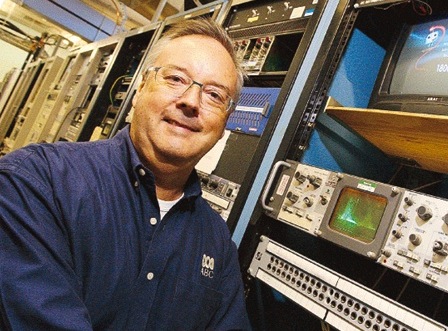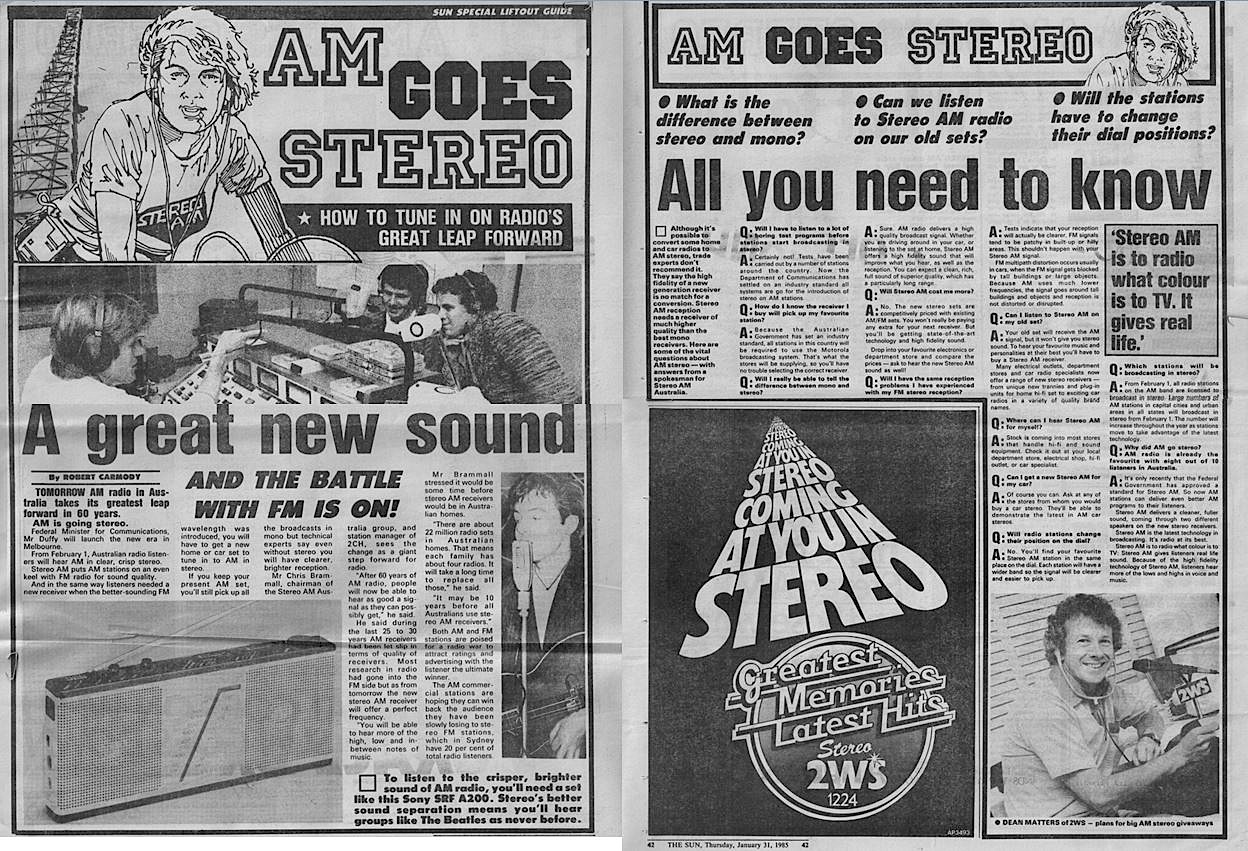Mark Spurway and Trevor Sinclair continue this series which marks 30 years since AM Stereo was introduced into Australia.
As Mark Spurway says, “AM Stereo was seen as the saviour for the music stations” at the time. It wasn’t, but some good lessons were learnt from that period.
Trevor Sinclair is a little more blunt, putting the technology alongside other failures like the Leyland P76 and Ford’s Edsel.
Mark and Trevor reflect on that era for radioinfo.
MARK SPURWAY
In another life in the 1980’s I was Promotions Manager at 2WL in Wollongong and 2GO Gosford and involved in the launch of AM stereo in those markets – Stereo 13 2WL and Stereo 801 2GO. Both stations invested heavily into AM stereo, both technically and in a marketing sense.
The technology was, at the time, seen by AM operators to be a counter to the emerging popularity of the new metro FM stations launched in the early 80’s. This may seem strange today, but at that time AM music stations were still dominating the ratings, however the movement to FM was gathering momentum. AM Stereo was seen as the saviour for the music stations, in particular, as a way to combat FM.
With hindsight, this strategy had some flaws. While new FM stations had been launched in the major markets in the early 1980’s, planning in regional markets was advanced for new FM radio frequencies and the rollout of triple j and Classic FM had been underway for some time. Any impact that AM stereo had, soon evaporated with the proliferation of FM licences being granted across the country. The large and cheap availability of FM radios was in contrast to the small and expensive range of AM stereo sets available restricted the popularity of AM stereo as consumers needed to buy AM stereo radios to experience the ‘new sound’.
As a technology at the time I thought it was great. Having a car radio with AM stereo (one of the few) I loved the rich stereo that was produced.
Stations invested in stereo studio desks and moved to playing CD’s from carts so the audio quality improved dramatically. Utilising advanced audio processing also became the norm which, despite some initial disasters I remember at 2WL with an echo effect, enhanced the audio quality.
The introduction of AM stereo had one lasting effect – it made station owners and managers understand the importance and necessity of having good studio equipment and audio processing to delivery an enhanced listening experience. Issues that programmers at the time were always arguing for, and now is the norm.
AM Stereo continued to be broadcast by most AM music stations for 2 decades, however the lack of technical support, and lack of receivers, killed off any chance of success. The ABC stopped broadcasting in AM stereo a decade ago due to lack of available radios, no technical support for the equipment at transmitter sites, and the knowledge of an emerging DAB+ platform which could provide digital audio quality from the existing AM and FM platforms.
 Mark Spurway is now Head of Transmission Network Services and Communications Networks for ABC Radio.
Mark Spurway is now Head of Transmission Network Services and Communications Networks for ABC Radio.
TREVOR SINCLAIR
On February 1st 1985 AM stereo broadcasting officially began in Australia adopting with Motorola C-QUAM system, one of five standards available.
I was working at 2UW at the time and it seemed to take a while to get the sound right. We were calling it the Amazing AM – and yes, it was amazingly not good to start with. 2UW Engineers continually worked on improving it. Much the same with 2WS which sounded somewhat over modulated. 2SM was doing its Light & Easy Format at the time and to my ears sounded the best.
I recall an FM Programmer at the time describing AM as “sound being filtered through mud, now with AM Stereo it’s twice as bad!”
At launch I bought a Sony Walkman with a Cassette Player and AM Stereo receiver in it. Sony went from the Walkman to a portable CD Player with FM receiver – dumping AM Stereo, it simply wasn’t in the journey.
I recently rediscovered that old faithful Walkman, popped some batteries in it to have a listen to AM and only the Mono light was showing.
Was it that bad or was it a marketing failure? What was the availability of AM Stereo receivers like? What was the reach and uptake?
I can’t recall it ever being available in cars.
Was there much interest?
To my mind it just isn’t dynamic. I put it alongside other failures like the Leyland P76 and Ford’s Edsel.
 Trevor is now a Sydney based writer, producer, presenter and voice artist.
Trevor is now a Sydney based writer, producer, presenter and voice artist.
See our earlier articles on AM Stereo here and here, and listen to some AM Stereo retro jingles uploaded on Craig Medding’s retroradio soundcloud below.
Below is a special liftout from the Sun newspaper from 1985, explaining AM Stereo, thanks to Wayne Mac and the radio Green Room (click to enlarge).


